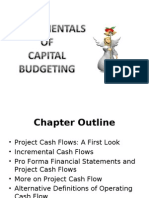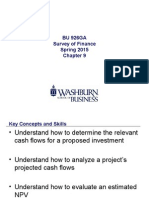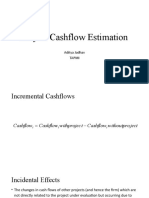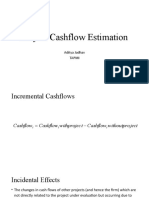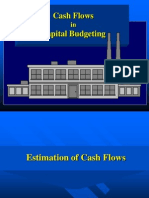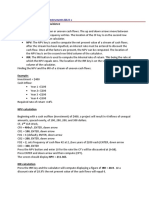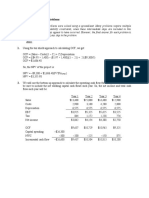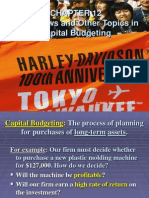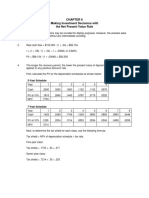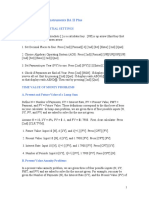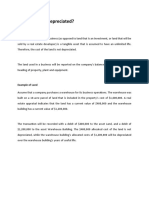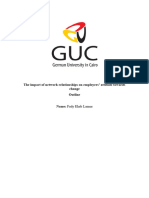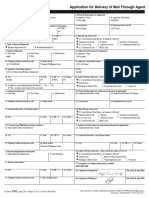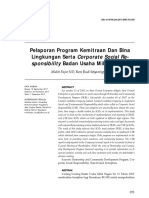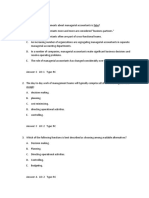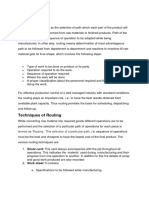0% found this document useful (0 votes)
70 views34 pagesLecture Notes Topic 4 Part 2
The document provides information on calculating net present value (NPV) using a 7-step process. It includes an example calculation where the NPV of a potential project is negative, so the project would be rejected. It also discusses calculating NPV using a one-step cash flow statement approach instead of separate profit/loss and cash flow statements. The key steps in the NPV calculation process are outlined.
Uploaded by
sir bookkeeperCopyright
© © All Rights Reserved
We take content rights seriously. If you suspect this is your content, claim it here.
Available Formats
Download as PPT, PDF, TXT or read online on Scribd
0% found this document useful (0 votes)
70 views34 pagesLecture Notes Topic 4 Part 2
The document provides information on calculating net present value (NPV) using a 7-step process. It includes an example calculation where the NPV of a potential project is negative, so the project would be rejected. It also discusses calculating NPV using a one-step cash flow statement approach instead of separate profit/loss and cash flow statements. The key steps in the NPV calculation process are outlined.
Uploaded by
sir bookkeeperCopyright
© © All Rights Reserved
We take content rights seriously. If you suspect this is your content, claim it here.
Available Formats
Download as PPT, PDF, TXT or read online on Scribd
/ 34







